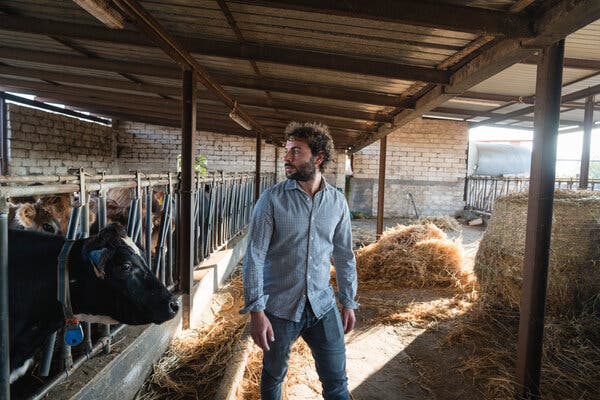
URGENT UPDATE: Climate change is severely impacting Italy’s famed burrata cheese supply, forcing cheesemakers to adapt rapidly. Angelantonio Tafuno, a fourth-generation cheesemaker from Puglia, revealed that extreme temperatures and droughts linked to global warming are causing his Podolica cows to produce significantly less milk.
Just recently, Mr. Tafuno, aged 32, shared his concerns over the dwindling milk supply critical to his family’s traditional cheese production. As Italy grapples with severe droughts and catastrophic fires, producers like Tafuno are under immense pressure to innovate and survive.
“We must do more with less,” Tafuno emphasized, highlighting the pressing need for cheesemakers to develop new cheese varieties that require minimal milk. This transformation is not just about embracing a slower lifestyle; it’s about preserving a centuries-old tradition in the face of a climate crisis.
Puglia, known for producing a majority of Italy’s creamy burrata, is witnessing firsthand the effects of climate change. The region has experienced soaring temperatures that have led to significant reductions in milk yield. Tafuno’s approach includes creating artisanal cheeses that can be produced within a limited timeframe, allowing him to adapt to the new reality.
The implications of this trend extend beyond the cheesemaking community. With burrata and mozzarella being staples in kitchens worldwide, consumers could soon face shortages or increased prices for these beloved products. As cheesemakers strive to maintain quality while coping with climate-induced challenges, the future of Italy’s dairy heritage hangs in the balance.
In light of these developments, it’s crucial for consumers and food enthusiasts to understand the impact of climate change on their favorite foods. This situation is evolving, and those who cherish Italy’s culinary traditions must brace for potential changes in availability and pricing.
As the climate crisis escalates, the survival of artisanal cheesemaking in Italy will depend on the ability of producers like Tafuno to innovate and adapt. Keep an eye on this developing situation, as it could reshape the landscape of Italian cuisine.





